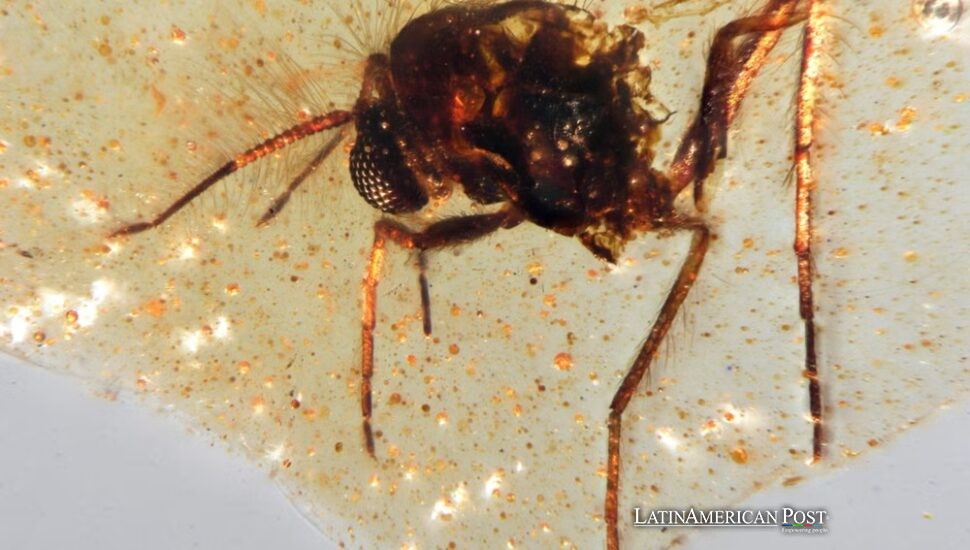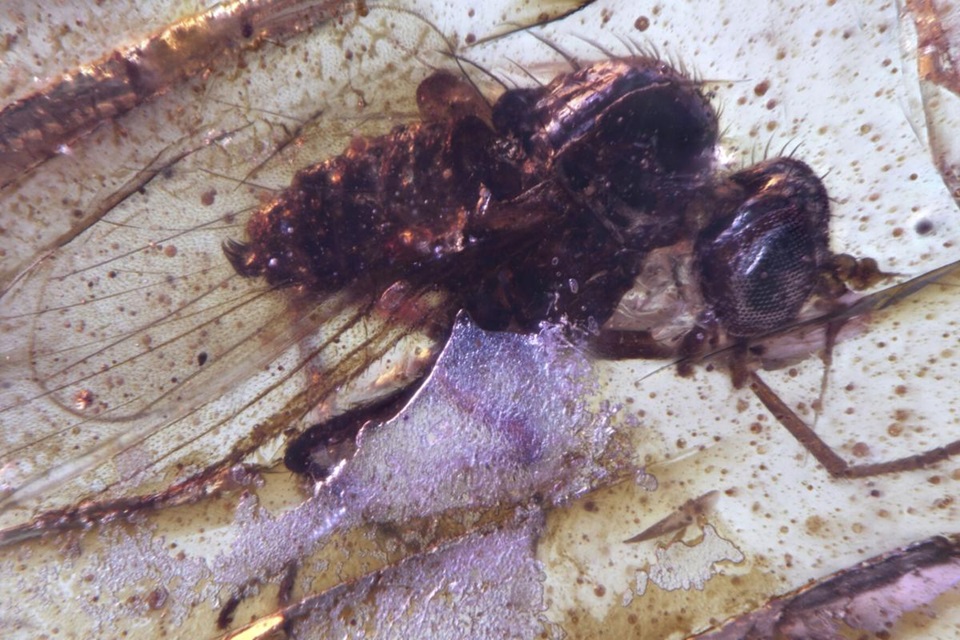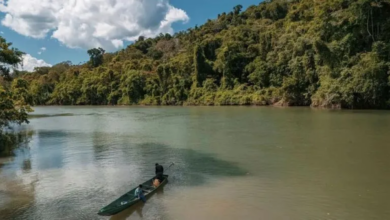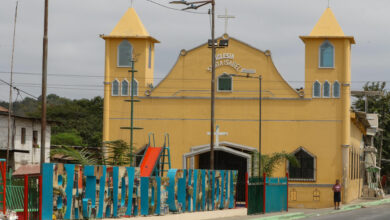Ecuador’s Amber Windows Rewrite the Story of Flowers, Insects, and Where Life’s Partnerships Began

For more than a century, the tale of how flowers and insects struck their great evolutionary bargain has been told through amber from the Northern Hemisphere. Fossilized resin from Baltic forests, Burmese hillsides, and Canadian outcrops became our picture book of the past. South America, part of the ancient supercontinent Gondwana, remained conspicuously absent. That silence has now been broken.
The First Southern Windows Open
In the sandstone quarries of Genoveva, on the edge of Ecuador’s Amazon basin, researchers have uncovered amber fragments dating back 112 million years. Inside these golden droplets are beetles, flies, wasps, and ants frozen in time, as intact as if they had landed only yesterday. “Amber pieces are little windows into the past,” paleoentomologist Ricardo Pérez-de la Fuente told the AP. These southern windows swing open to reveal what many suspected but could not prove: the partnership between flowering plants and insects was not just a northern affair.
For scientists like David Grimaldi of the American Museum of Natural History, who was not part of the team, the find fills a glaring gap. “The scarcity of southern amber has been an enigma,” he told the AP, pointing out that resin preserves the small, the delicate, the ephemeral—the very gears of ecosystems that rock layers rarely capture. The insects from Ecuador are the first ancient species ever recorded in South American amber. They force us to redraw our maps of the Cretaceous, not with the equator as a dividing line but as a bridge linking worlds.
A Forest Not Quite the Amazon We Know
The quarry that yielded the amber sits where today’s Amazon rainforest begins to unfurl. But the forest of 112 million years ago looked nothing like the lush jungle we imagine now. Pollen and leaf fossils embedded alongside the insects reveal landscapes of ferns and conifers. Among them was the Monkey Puzzle Tree, today an Andean survivor absent from the lowland Amazon.
“It was a different kind of forest,” said Fabiany Herrera, curator at Chicago’s Field Museum and a co-author of the study, speaking to the AP. The difference is crucial. The Amazon is not an eternal cathedral of green but a restless traveler through climates, continents, and epochs. Its resilience has always been in change.
The age of the amber places it early in the flowering plant revolution, when ferns and conifers still ruled the canopy and angiosperms were just beginning to compete for light and insect attention. The quarry preserves that competition mid-stride: the jostling of lineages, the opportunism of pollinators, the mess that precedes dominance. To see these insects beside spores and ancient pollen is to glimpse the Amazon in rehearsal, a reminder that even the greatest forests are improvisations.
Why These Fossils Change More Than Textbooks
The discovery is not just about insects in resin; it is about correcting perspective. For decades, the evolutionary story has leaned north, simply because that is where amber was accessible, funded, and collected. Ecuador’s find restores balance, placing South America back in the conversation as a co-author of biodiversity.
“This is the time when the relationship between flowering plants and insects got started,” Pérez-de la Fuente told the AP. “And that turned out to be one of the most successful partnerships in nature.” Without it there are no fruits, no seeds, no rainforests, no food webs as we know them. To tell that story without South America was always incomplete. Now the missing hemisphere has a voice.
The backstory of the quarry itself carries a lesson. Local miners and geologists knew of amber at Genoveva long before the fossils reached international journals. A decade ago, Smithsonian paleobotanist Carlos Jaramillo traced the rumors through old field notes and finally arrived at the pit. “I went there and realized this place is amazing,” he told the AP. His awe is inspiring—and damning. How many other “amazing” sites lie overlooked in South America, known to workers but ignored by science because they aren’t in Europe or North America? How many are lost each year to quarrying before anyone knows what was there?
The Ecuador amber reminds us that access and investment shape knowledge. Without resources for local labs, collections, and training, discoveries risk being exported, their significance drained away before the region that birthed them can claim them.

Associated Press
What We Do Next Matters
The scientific possibilities are vast. Researchers will comb these amber pieces for microscopic clues—grains of pollen stuck to insect bodies, fungal spores on wings, mouthparts specialized for certain flowers. Each detail will refine the timeline of pollination and plant defense, of how insects and angiosperms built the living architecture we inherited.
But beyond science, there is a civic urgency. First, fund the work locally. Ecuadorian scientists and institutions must be more than sample collectors for northern museums. If these “windows” are to stay open, the communities around them must be partners in ownership and interpretation.
Second, protect the sites. Genoveva is a working sandstone mine. The amber is exposed only because heavy machinery stripped away the cover. That accessibility is also vulnerability. “There’s so much amber in the mines,” Jaramillo told the AP—a statement equal parts excitement and warning. Governments and universities should establish agreements with quarry operators so that fossil-rich layers trigger rapid collection and temporary preservation. Transparency, not secrecy, will keep priceless records from being crushed into construction aggregate.
Third, connect these findings to today’s environmental choices. The Amazon’s present form is young; its resilience depends on those plant-insect partnerships forged over 100 million years. Logging, land conversion, and climate stress threaten to unravel them in decades. Every insect sealed in amber is a memo from deep time: collapse these networks now, and you are throwing away relationships perfected before humans existed.
Finally, embrace the lesson of scale. “Amber tends to preserve things that are tiny,” Grimaldi told the AP. In public debate, the tiny is often dismissed. But Ecuador’s amber insists the small is the system. Flies pollinate, ants engineer, midges feed fish that feed people. Ignore the small and you unravel the whole.
The image that lingers is modest: a droplet of resin, no bigger than a fingernail, holding a fly that died 112 million years ago. It is easy to miss, easy to crush, easy to discard. Yet inside it lies proof that South America was not silent during life’s great flowering, that its forests and insects were co-conspirators in the partnership that sustains us today.
Also Read: Guanaquerx the Robot Rewrites Andean Liberation on Four Legs
The window has opened. The view is startling. What matters now is whether we step through it—into better science, better stewardship, and a deeper respect for the continent that has just reminded the world how long it has been part of the story.




